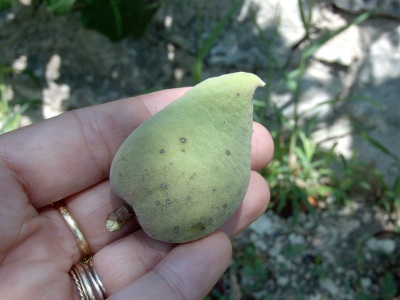︎︎︎ MANDORLO MANDOLINO

The custom of consuming green almonds is very old and still widespread throughout the Middle East. There are cultivars more suitable to be used in this green phase because with the largest and fleshy fruit. The 'Santa Caterina' and 'Mandorlone' were the most popular in our areas. Large 'Mandorlone' trees were found in the municipality of Città di Castello (PG), but the variety was once widespread throughout Umbria and also in Tuscany and the Marche. Large tree, vigorous and rustic, with an open habit, grown alone among stones and sands. It blooms late. The flowers are white. The whole fruit is large in size; the external husk is not very hairy with the characteristic shape with pronounced suture, the shell is cordate, moderately porous and semi-hard, the elliptical almond is of medium size, sweet but not very tasty. It is more suitable for fresh consumption and is harvested in May for various gastronomic uses.